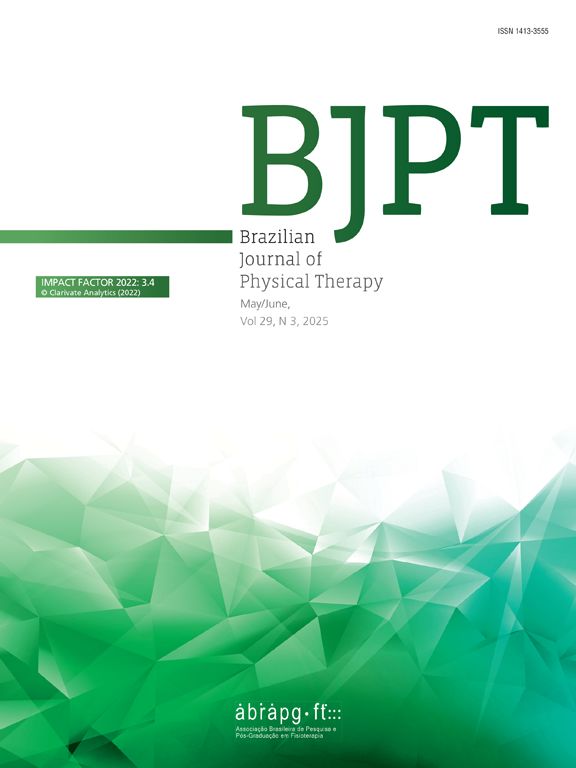The coronavirus disease 2019 (covid-19) is an ongoing public health problem worldwide. Covid-19 is an infectious condition caused by the Severe Acute Respiratory Syndrome Coronavirus-2 (SARS-CoV-2) and was recognized as a global pandemic in March 2020,1 causing two million deaths by March of 2021, according to the World Health Organization.1 In Brazil, the number of confirmed cases and deaths by Covid-19 in March 2021 was more than 12.9 million and 328,000, respectively.1
Covid-19 is now identified as a multi-organ disease with a broad spectrum of clinical manifestations. Although covid-19 most frequently affects the respiratory and cardiovascular system, the musculoskeletal system, central nervous system, and peripheral nervous system are also affected.2 The most commonly reported symptoms among patient post-acute covid-19 include fatigue, dyspnea, muscular weakness, anxiety, depression, cognitive disturbance, headaches, hair loss, and chest pain.3 Pain can be a frequent complaint in patients after covid-19,4 but it remains overlooked and not well understood. Some patients with chronic pain may experience worsening symptoms resulting from covid-19 due to personal issues or decreased healthcare provision.5 In this context, we highlight the possibility of some patients developing pain symptoms as a consequence of covid-19 resulting as part of a post-viral syndrome or deterioration due to exacerbation of preexisting physical symptoms, mental complaints, or lifestyle factors (e.g., insomnia, physical inactivity).
Clinicians should be mindful that patients with post-acute covid-19 may report several musculoskeletal and neurological manifestations. The most common musculoskeletal symptoms include myalgia (19%), headache (12%), back pain (10%), muscle weakness (1.6%), skeletal muscle injury (1.6%), arthralgia (1.6%), and facial muscle pain (1.6%).2 Brazilian patients with covid-19 presented myalgia, fatigue, and headache as initial symptoms.6 Nonetheless, it is now well established that covid-19 presents peripheral or central neurological complications.7 Dizziness (10%), smell impairment (35%), taste impairment (33%), acute cerebrovascular disease (3%), ataxia (3%), impaired consciousness (2%), and impaired vision (1.6%) are examples of neurological manifestations reported by patients with covid-19.2 Neuralgia, hyperalgesia, and allodynia are other neurological symptoms present in patients with covid-19.8
Clinicians should also recognize the relevance of identifying pain phenotypes correctly. For instance, it has been suggested that infections may directly impact the peripheral nervous system or central nervous system or induce post-viral immune syndrome favoring the development of neuropathic pain.4 Frequently, patients with neuropathic components present unfavorable outcomes compared to patients with nociceptive pain. Methods to discriminate between mechanism-based categories of musculoskeletal pain have been presented in a recent systematic review.9 Therefore, assessing the pain phenotypes in patients with persistent covid-19 symptoms provides important insights to physical therapists.
Given the global SARS-CoV-2 pandemic, we draw clinicians’ attention to recognize post-acute covid-19 as a multi-organ disease.10 Research priorities in the physical therapy field should include clinical studies to develop an evidence-based approach for caring for these patients considering persistent symptoms after recovery from acute covid-19 as a current public health problem. Additionally, the potential of tailored treatment for patients with persistent symptoms who were discharged or not admitted to hospitals must be investigated in future studies. Considering the large number of patients with covid-19 in Brazil, rehabilitation services should be prepared to offer adequate pain treatments aiming to reduce the impact that this disease can have on individuals and society now and in the future.
This study was financed in part by the Coordenação de Aperfeiçoamento de Pessoal de Nível Superior – Brasil (CAPES).





